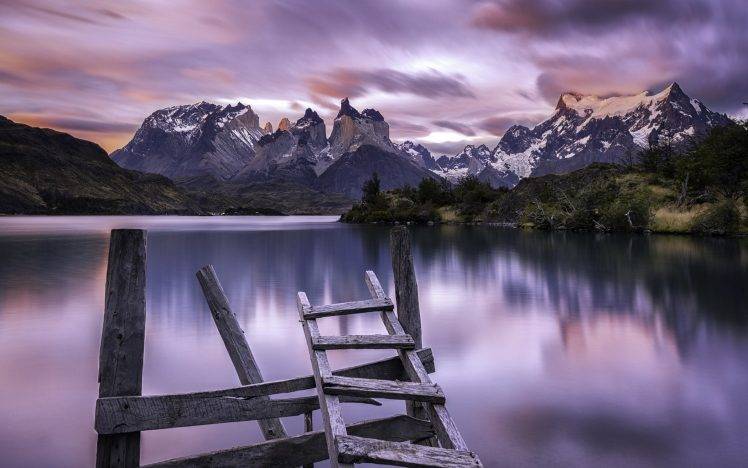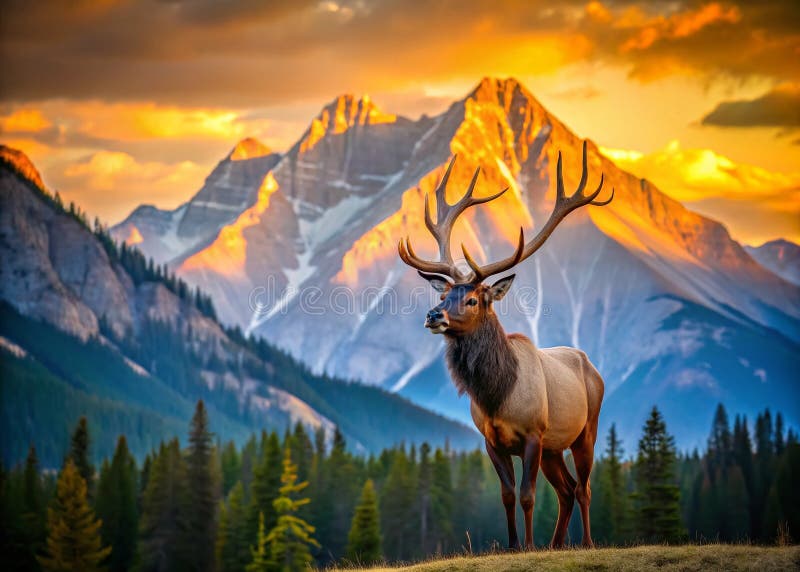Elevate Your Adventure: Three Unforgettable Mountain Activities

Are you craving an adrenaline rush combined with breathtaking natural beauty? Do you dream of conquering towering peaks, traversing dramatic landscapes, and capturing stunning wildlife moments? Then it's time to elevate your adventure with three unforgettable mountain activities: Via Ferrata in the Dolomites, multi-day trekking in Torres del Paine, and wildlife photography in the Canadian Rockies. Each offers a unique challenge and reward, promising experiences you'll cherish forever. Planning such incredible trips can be daunting, but VistaLocation.com is your go-to resource, providing comprehensive guides, trusted tour operators, and everything you need to make your mountain dreams a reality.
Dolomites Vertigo: Your Guide to Conquering Via Ferrata
Via Ferrata, meaning "iron path" in Italian, is a protected climbing route found in the Alps and other mountain ranges. It involves traversing a mountain face with the aid of steel cables, rungs, ladders, and bridges. The Dolomites, with their dramatic limestone peaks and stunning scenery, offer some of the most breathtaking Via Ferrata experiences in the world, offering a unique blend of hiking and climbing.
Skill Level
While Via Ferrata doesn't require advanced climbing skills, it does demand a good level of fitness and a head for heights. Some experience with scrambling or easy climbing is beneficial, but many routes are suitable for beginners, especially with the guidance of experienced professionals. If you're new to Via Ferrata, consider booking a guided tour to learn the ropes and ensure your safety.
Gear Recommendations
Safety is paramount when tackling Via Ferrata. Here's a list of essential gear:
- Via Ferrata Set: This includes an energy absorber, harness, and two carabiners specifically designed for Via Ferrata.
- Helmet: A climbing helmet is crucial to protect your head from falling rocks.
- Sturdy Hiking Boots: Ankle support is essential for navigating uneven terrain. We recommend the Salewa Mountain Trainer Mid GTX.
- Gloves: Leather or synthetic gloves protect your hands from the steel cables.
- Appropriate Clothing Layers: Mountain weather can change rapidly, so dress in layers.
You can find all of these items and more through our trusted equipment partners on VistaLocation.com.
Safety Precautions
Before embarking on a Via Ferrata adventure, it's crucial to take necessary safety precautions:
- Check Weather Conditions: Mountain weather can change rapidly. Avoid Via Ferrata during thunderstorms.
- Properly Clip In: Always ensure both carabiners are properly clipped into the steel cables.
- Three Points of Contact: Maintain three points of contact at all times (two hands, one foot; or two feet, one hand).
- Never Unclip Both Carabiners: Always have at least one carabiner clipped into the cable.
- Consider a Guide: If you are a beginner, hire a certified mountain guide.
For more information and safety tips, consider taking a Via Ferrata course with a reputable organization. Image: A breathtaking shot showcasing a person clipped into a steel cable on a Via Ferrata route in the Dolomites, capturing the vast landscape and the sheer rock face. The image emphasizes the adventure and the sense of scale.
Best Time to Visit
The best time to visit the Dolomites for Via Ferrata is from June to September, when the weather is generally more stable and the snow has melted from the higher elevations.
Visual Description
Imagine yourself clipped into the cool steel cable, the wind whipping through your hair. The sun, a warm, diffused glow through the high-altitude haze, illuminates the sheer limestone face of the Catinaccio. Below, the valley stretches out like a patchwork quilt of green meadows and dark forests.
Itinerary Suggestion
Here's a sample 3-day Via Ferrata itinerary in the Dolomites:
- Day 1: Sentiero Ivano Dibona (Moderate difficulty, 500m elevation gain, 6-8 hours).
- Day 2: Via delle Bocchette Centrale (Difficult, 800m elevation gain, 8-10 hours).
- Day 3: Rest day or explore a shorter Via Ferrata route.
Real-Life Narrative
"The Dolomites offer some of the most breathtaking Via Ferrata experiences in the world, but respecting the mountain and understanding the risks is paramount," says Marco Rossi, a mountain guide operating in the Dolomites.
Call-to-Action
Book Your Dolomites Via Ferrata Adventure Now! [vistalocation.com]
Trek to the Towers: Planning Your Ultimate Torres del Paine Adventure
Torres del Paine National Park in Chilean Patagonia is a trekking paradise. Its iconic granite towers, turquoise lakes, and dramatic glaciers draw adventurers from around the globe. A multi-day trek here is a truly unforgettable experience, pushing your limits while immersing you in unparalleled natural beauty.
Skill Level
Multi-day treks in Torres del Paine require excellent physical fitness and backpacking experience. The 'W' trek is moderately challenging, suitable for those with some hiking experience, while the 'O' circuit is significantly more strenuous, demanding advanced backpacking skills.
Gear Recommendations
Proper gear is essential for a safe and enjoyable trekking experience in Patagonia's unpredictable weather:
- Sturdy Backpack: Choose a backpack with a comfortable suspension system. We recommend the Osprey Atmos AG 65.
- Lightweight Tent: A durable tent is crucial for protection from the elements. Consider the Big Agnes Copper Spur HV UL2.
- Warm Sleeping Bag: Temperatures can drop significantly at night, so bring a sleeping bag rated to at least 0°C (32°F).
- Waterproof Hiking Boots: Keep your feet dry and comfortable with waterproof hiking boots, such as the Merrell Moab 2 GTX.
- Rain Gear: Pack a waterproof jacket and pants to stay dry in the unpredictable Patagonian weather.
- Trekking Poles: Trekking poles provide stability and reduce strain on your knees.
Find all the gear you need at our recommended partners through VistaLocation.com!
Safety Precautions
Patagonian weather is notoriously unpredictable. Be prepared for strong winds, sudden temperature changes, and rain or snow at any time of year. Booking campsites in advance is essential, especially during peak season. Carry sufficient food and water, and consider purchasing travel insurance that covers emergency evacuation.
Best Time to Visit
The best time to visit Torres del Paine is from October to April (Patagonian summer), when the weather is milder and the daylight hours are longer.
Visual Description
Imagine standing at the base of the granite towers at sunrise. The first rays of light, piercing through the low-hanging clouds, paint the peaks in shades of fiery orange and deep purple. The glacial lake below, a mirror-like surface, reflects the majestic scene.
 Image: A long-exposure shot of Torres del Paine at sunrise. The granite towers are illuminated with orange and purple hues, with a reflective glacial lake in the foreground, creating a serene and awe-inspiring scene.
Image: A long-exposure shot of Torres del Paine at sunrise. The granite towers are illuminated with orange and purple hues, with a reflective glacial lake in the foreground, creating a serene and awe-inspiring scene.
Itinerary Suggestion
Here's a detailed 5-day itinerary for the 'W' trek:
- Day 1: Transfer to Torres del Paine, hike to Camping Paine Grande.
- Day 2: Hike to Refugio Grey, visit Glacier Grey.
- Day 3: Hike to Camping Italiano, explore the French Valley.
- Day 4: Hike to Camping Las Torres, prepare for the sunrise hike.
- Day 5: Sunrise hike to the base of the towers, descend and transfer back.
Real-Life Narrative
"Torres del Paine was the most challenging and rewarding trekking experience of my life. The scenery is simply unmatched," says Sarah Miller, a past visitor.
Call-to-Action
Plan Your Torres del Paine Trek Now! [vistalocation.com]
Capture the Wild: A Photographer's Guide to the Canadian Rockies
The Canadian Rockies are a wildlife photographer's dream. This vast wilderness is home to a diverse array of animals, from majestic elk and grizzly bears to elusive wolves and playful otters. Capturing these creatures in their natural habitat is an unforgettable experience.
Skill Level
While no specific photography skill is strictly required, understanding basic photography principles like aperture, shutter speed, and ISO is beneficial. More importantly, patience, respect for wildlife, and knowledge of animal behavior are essential for successful and ethical wildlife photography.
Gear Recommendations
To capture stunning wildlife photos, you'll need the right gear:
- DSLR or Mirrorless Camera: A camera with interchangeable lenses offers the most flexibility.
- Telephoto Lens: A telephoto lens with at least 300mm of focal length is essential for capturing wildlife from a safe distance. We recommend the Sony FE 200-600mm f/5.6-6.3 G OSS or the Canon EF 100-400mm f/4.5-5.6L IS II USM.
- Tripod: A sturdy tripod is crucial for sharp images, especially in low light.
- Extra Batteries and Memory Cards: Don't run out of power or storage space!
- Warm Clothing: Be prepared for cold weather, even in summer.
Find camera gear and all your photography needs with VistaLocation.com's partners!
Safety Precautions
When photographing wildlife, safety should be your top priority:
- Maintain a Safe Distance: Never approach or harass wild animals.
- Carry Bear Spray: If hiking in bear country, carry bear spray and know how to use it.
- Be Aware of Your Surroundings: Pay attention to your surroundings and be aware of potential hazards.
- Never Feed Wild Animals: Feeding wildlife can alter their behavior and make them dependent on humans.
Best Time to Visit
Spring and fall offer the best wildlife viewing opportunities. Bear viewing is popular in spring, while the elk rut (mating season) occurs in fall.
Visual Description
Picture yourself in the golden light of late afternoon, kneeling amongst a field of wildflowers. A majestic bull elk, with its massive antlers covered in velvet, pauses mid-stride and locks eyes with you. The air is crisp and still, carrying the scent of pine and damp earth.
 Image: A close-up portrait of a bull elk in the Canadian Rockies during golden hour. The shallow depth of field blurs the background, emphasizing the elk's majestic features and creating a sense of raw power and natural beauty.
Image: A close-up portrait of a bull elk in the Canadian Rockies during golden hour. The shallow depth of field blurs the background, emphasizing the elk's majestic features and creating a sense of raw power and natural beauty.
Location Suggestions
- Banff National Park: Offers great opportunities for photographing elk, deer, and bears.
- Jasper National Park: Home to diverse wildlife, including moose, caribou, and wolves.
- Yoho National Park: Known for its stunning scenery and opportunities for wildlife viewing.
Real-Life Narrative
"Patience is key. Spend time observing the animals and their behavior, and be prepared to wait for the perfect shot," advises renowned wildlife photographer, Johnathan Smith.
Call-to-Action
Start Planning Your Canadian Rockies Wildlife Photography Trip! [vistalocation.com]
Active mountain adventures offer unparalleled opportunities for personal growth, breathtaking experiences, and lasting memories. Whether you're conquering the iron paths of the Dolomites, trekking to the iconic towers of Torres del Paine, or capturing the wild beauty of the Canadian Rockies, VistaLocation.com is here to help you plan your next unforgettable journey. Explore our website for comprehensive guides, trusted tour operators, and all the resources you need to elevate your adventure.